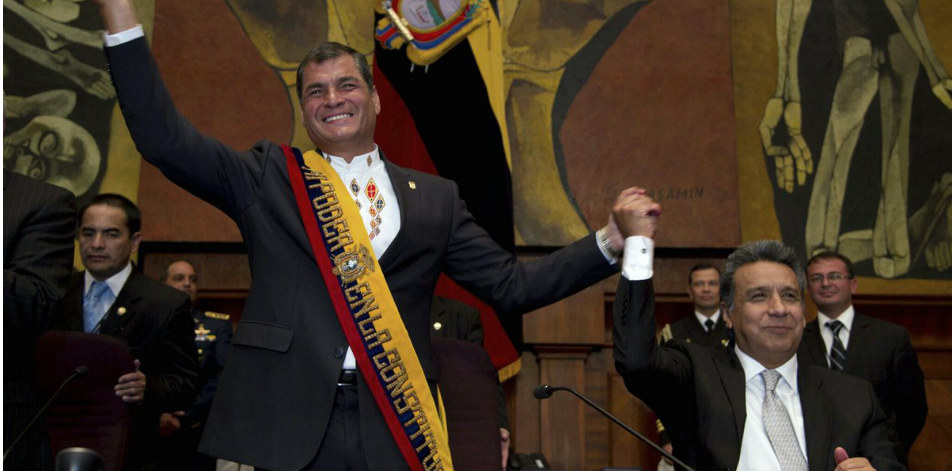
On Sunday, April 2nd, Ecuador held its second round presidential elections. The day was tense. Both candidates, Guillermo Lasso, of the CREO Movement, and Lenin Moreno of the ruling party, proclaimed victory. However, little by little the trend was confirmed in favor of the ruling candidate. In the end, the National Electoral Council (CNE) offered an official statement: Lenin Moreno would be president.
The polls showed that Lasso was winning. CEDATOS declared the Movement CREO as the winner with a 6 point margin of victory. Correa’s opponents began to celebrate. But the CNE, through a broadcast, extinguished the excitement.
Immediately the screams of “fraud” began to emerge. Guillermo Lasso appeared in the media to reject the results, as they did not match what the pollsters suggested. In addition, the CNE website was down. The opposition candidate announced that he would challenge the election results and called on citizens to take the streets and protest.
Today, Lenin Moreno is assumed to be the winner of the elections. The Secretary General of the Organization of American States, Almagro, congratulated him. But Guillermo Lasso, along with a considerable part of civil society, say that fraud was committed. In fact, they present enough proof and first hand testimonies to suggest the evidence of fraud.
The reasons why there was fraud in Ecuadorian elections
According to reports from the Guillermo Lasso campaign, on Wednesday, April 5th, “a total of 1,795 records” are irregular. This adds up to 592,350 votes.
In the second round, Lenin Moreno won with 5,060,114 votes; while the opposition candidate had 4,833,697. That’s why the more than five hundred thousand irregular votes Lasso denounces are decisive.
“After reviewing the CNE flat file, our electoral control was able to verify irregularities in the records,” Lasso wrote on his Twitter account.
Nosotros planteamos la revisión de cerca de 39.900 actas que es casi el 100% del universo electoral ecuatoriano. @CNNEE #ConcluPRUEBAS
— Guillermo Lasso (@LassoGuillermo) April 6, 2017
Tweet: We plan on checking around 39,900 records that is almost 100% of the total Ecuadorian vote.
Likewise, the CREO Movement presented documentation that shows that 82.2% of the official records coincide the ones in their possession. These were obtained thanks to the control and hard work of party observers at the polling stations.
And with that 82.2% of the voting records held by the Lasso campaign, Lasso would have a 50.5% voting share compared to Lenin Moreno’s 49.5% . The remaining percentage is inconsistent.
In addition, the president of CREO, Cesar Monge, reported on Wednesday, April 5th, that on election day, 4.7% of polling stations were found to have “unusual” behavior.
According to Monge, there was a trend in favor of Lenin Moreno in some areas, 80-20 over Lasso. However, the “socio-economic” conditions in the area suggest irregularities.
Another anomaly was that on election day, April 2nd, there was an “electoral blackout”, according to the opposition candidate.
The National Electoral Council responded to Lasso’s claims. The opposition to the ruling party only demands to recount votes. And, now, according to the president of the CNE, Juan Pablo Pozo, the recount request will be accepted in the event that CREO’s evidence has sufficient grounds.
Finally, Pozo said that in order to contest the results, they must first await the electoral body’s proclamation of official results.
All the data and complaints have been collected in a document prepared by the CREO movement. The archive was provided to PanAm Post by the publisher of the Cato Institute and columnist of the newspaper El Universo, Gabriela Calderón.
Fuente: PanamPost
